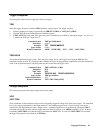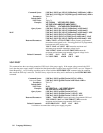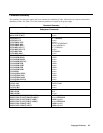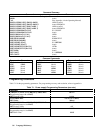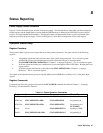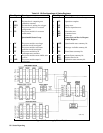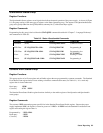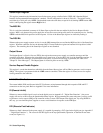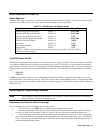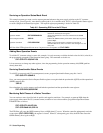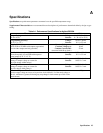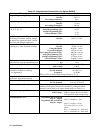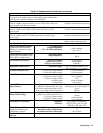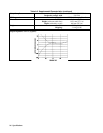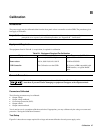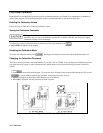
Status Reporting 91
Initial Conditions At Power On
Status Registers
When the power supply is turned on, a sequence of commands initializes the status registers. For the factory-default *RST
power-on state, Table 8-4 shows the register states and corresponding power-on commands.
Table 8-4. Default Power On Register States
Register Condition Caused By
Operation PTR; Questionable PTR All bits = 1
STAT:PRE
Operation NTR; Questionable NTR All bits = 0
STAT:PRE
Operation Event; Questionable Event All bits = 0
*CLS
Operation Enable; Questionable Enable All bits = 0
STAT:PRE
Standard Event Status Enable All bits = 0
1
*ESE 0
Status Byte All bits = 0
*CLS
Status Request Enable All bits = 0
1
*SRE 0
Output Queue Cleared
*CLS
1
If PSC=1. If PSC = 0, then the last previous state before turn on is recalled. The value of PSC is
stored in nonvolatile memory.
The PON (Power-On) Bit
The PON bit in the Standard Event register is set whenever the power supply is turned on. The most common use for PON
is to generate an SRQ at power on following an unexpected loss of power. To do this, bit 7 of the Standard Event Enable
register must be set so that a power-on event registers in the ESB (Standard Event Summary Bit). Also, bit 5 of the Service
Request Enable register must be set to permit an SRQ to be generated. The commands to accomplish these two conditions
are:
*ESE 128
*SRE 32
If *PSC is programmed to 0, the contents of the Standard Event Enable and Service RequestEnable registers are saved in
nonvolatile memory and recalled at power on. This allows a PON event to generate SRQ at power on. Programming *PSC
to 1 prevents these registers from being saved and they are cleared at power on. This prevents a PON event from generating
SRQ at power on.
Status Register Programming Examples
Note These examples are generic SCPI commands. See "Chapter 6 - Remote Programming" for information
about encoding the commands as language strings.
Determining the Cause of a Service Interrupt
You can determine the reason for an SRQ by the following actions:
• Use a serial poll or the *STB? query to determine which summary bits are active.
• Read the corresponding Event register for each summary bit to determine which events caused the summary
bit to be set. When an Event register is read, it is cleared. This also clears the corresponding summary bit.
• The interrupt will recur until the specific condition that caused each event is removed. If this is not possible,
the event may be disabled by programming the corresponding bit of the status group Enable register or NTR|PTR
filter. A faster way to prevent the interrupt is to disable the service request by programming the appropriate bit of
the Service Request Enable register.



